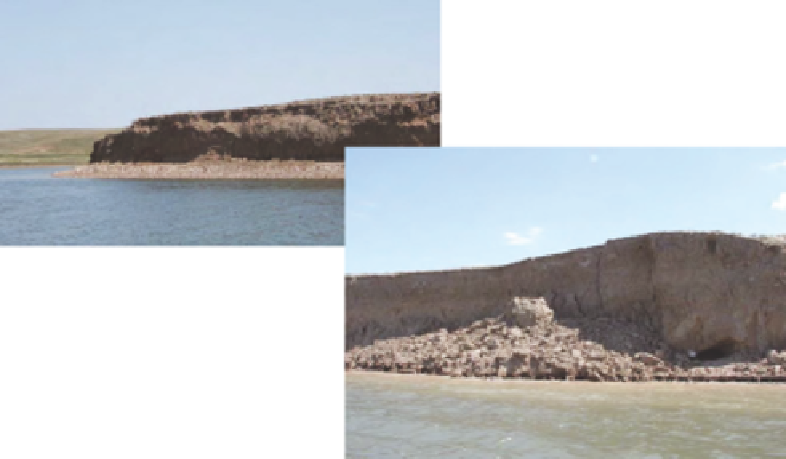Environmental Engineering Reference
In-Depth Information
component of reservoir design and management. For example, sediment management plans are
components of most reservoir operations. The design of many reservoirs is based on 50 or 100 years
of sediment storage, thereby establishing the design “life of the reservoir” (Morris et al. 2008).
The rate of sedimentation is related to the trapping eficiency of speciic reservoirs, but a regional
approach to estimating sediment damages in lakes and reservoirs indicated that 0.2% of the nation's
water storage capacity is lost annually (Crowder 1987; White 2001). Crowder also indicated that of
this, an average of 24% is due to soil erosion on cropland, with the greatest losses occurring in the
central United States.
Morris et al. (2008) divided sediment management in reservoirs into ive categories:
1. Sediment yield reduction
2. Sediment storage
3. Sediment routing
4. Sediment removal
5. Sediment focusing
Each of these categories is briely introduced in the following sections and is discussed in greater
detail in Morris and Fan (1998) and Morris et al. (2008).
17.3.1 S
edIMent
y
IeLd
r
eductIon
Sediment yield reduction refers to the reduction of sediment loads (or yields) to the reservoir. Loads
to the reservoir are from the reservoir's watershed, due to the point and nonpoint sources from the
watershed, and from the reservoir's shoreline.
Figure 17.3 illustrates shoreline erosion, which can contribute to reservoir sedimentation.
Management and restoration efforts for lakes and reservoirs may include a variety of methods to
Eroded material
forming a shelf
Recently eroded material that has not
moved further into the reservior
FIGURE 17.3
Examples of shoreline erosion from a USBR reservoir. (From Ferrari, R.L. and Collins, K.,
Erosion and Sedimentation Manual
, U.S. Department of the Interior Bureau of Reclamation, Sedimentation
and River Hydraulics Group, Denver, CO, 2006. Photograph by S. Nuanes.)

Search WWH ::

Custom Search